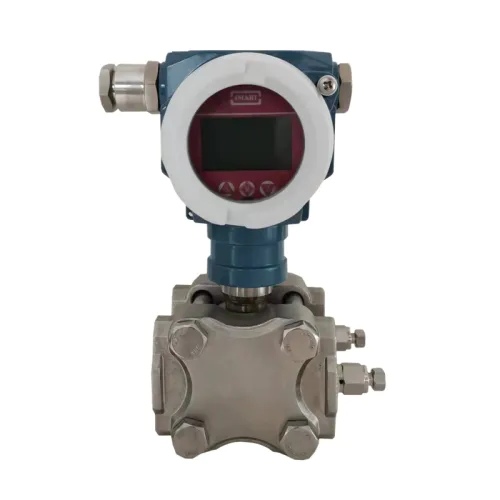Types and classifications of flow meters
by:Kaidi Sensors
2022-10-14
Instruments that measure fluid flow are collectively referred to as flow meters or flow meters. Flowmeter is one of the most important instruments in industrial measurement. From different perspectives, flow meters have different classification methods. There are two commonly used classification methods, one is to classify according to the measurement principle adopted by the flowmeter; the other is to classify according to the structural principle of the flowmeter. According to the measurement principle, the electrical principle is classified: the instruments used for this type of principle include electromagnetic type, differential capacitive type, inductive type, strain resistance type, etc. Acoustic principle: There are ultrasonic methods for flow measurement using the acoustic principle. Acoustic type (shock wave type), etc. Thermal principle: There are thermal, direct calorimetric and indirect calorimetric methods that use thermal principles to measure flow. Optical principle: laser type, photoelectric type, etc. are instruments that belong to this type of principle. Originally from the physical principle: nuclear magnetic resonance type, nuclear radiation type, etc. are instruments that belong to such principles. Other principles: there are marking principles (tracer principle, nuclear magnetic resonance principle), related principles, etc. 2. Classification according to the structural principle of the flowmeter According to the actual situation of the current flowmeter products, according to the structural principle of the flowmeter, it can be roughly classified into the following types: 1. The mechanical principle of the positive displacement flowmeter: the instruments that belong to this principle are: Differential pressure type and rotor type using Bernoulli's theorem; impulse type and movable tube type using momentum theorem; direct mass type using Newton's second law; target type using fluid momentum principle; turbine type using angular momentum theorem ; Vortex type and vortex street type using the principle of fluid oscillation; Pitot tube type and volume type and weir type, trough type and so on using the total static pressure difference. 2. Impeller flowmeter The working principle of the impeller flowmeter is to place the impeller in the measured fluid, and rotate under the impact of the fluid flow, and the flow rate is reflected by the speed of the impeller rotation. Typical impeller flowmeters are water meters and turbine flowmeters, and their structures can be mechanical transmission output type or electrical pulse output type. Generally, the accuracy of the water meter output by mechanical transmission is low, and the error is about ±2%, but the structure is simple and the cost is low. It has been mass-produced in China, and is standardized, generalized and serialized. The accuracy of the turbine flowmeter output by the electrical pulse signal is high, and the general error is ±0.2% to 0.5%. 3. Differential pressure flowmeter (variable pressure drop flowmeter) Differential pressure flowmeter consists of a primary device and a secondary device. The primary device is called a flow measuring element, which is installed in the pipeline of the measured fluid to generate a pressure difference proportional to the flow rate (velocity) for the secondary device to display the flow. The secondary device is called display instrument. It receives the differential pressure signal generated by the measuring element and converts it into the corresponding flow for display. The primary device of the differential pressure flowmeter is often a throttling device or a dynamic pressure measuring device (pitot tube, uniform velocity tube, etc.). The secondary device is a variety of mechanical, electronic and combined differential pressure gauges with flow display instruments. Differential pressure sensitive elements of differential pressure gauges are mostly elastic elements. Since the differential pressure and flow are in a square root relationship, the flow display instruments are equipped with a square root device to linearize the flow scale. Most instruments are also equipped with a flow accumulating device to display the accumulated flow for economical accounting. 4. The float of the variable area flowmeter (equal pressure drop flowmeter) placed in the upper and lower conical flow channels is moved by the force of the fluid flowing from the bottom to the top. When this force is balanced with the float's 'displayed weight' (the weight of the float minus the buoyancy of the fluid on which it is subjected), the captor is at rest. The height at which the float rests can be used as a measure of the flow rate. Since the flow cross-sectional area of the flowmeter varies with the height of the float, and the pressure difference between the upper and lower parts is equal when the float is stable, this type of flowmeter is called a variable area flowmeter or an equal pressure drop flowmeter. A typical instrument of this type of flowmeter is a rotor (float) flowmeter. 5. Momentum flowmeters use the momentum of the measured fluid to reflect the flow rate, called momentum flowmeters. Since the momentum P of the flowing fluid is proportional to the density of the fluid and the square of the flow velocity v, that is, p v2, when the flow section is determined, v is proportional to the volume flow Q, so p Q2. Set the proportional coefficient as A, then Q=A. Therefore, when P is measured, the flow rate Q can be reflected. This type of flowmeter mostly uses the detection element to convert the momentum into pressure, displacement or force, etc., and then measure the flow. Typical instruments for such flowmeters are target and rotary vane flowmeters. 6. Impulse flowmeters that use the impulse theorem to measure flow are called impulse flowmeters. They are mostly used to measure the flow of granular solid media, and are also used to measure the flow of mud, crystalline liquids and abrasives. Flow measurement ranges from a few kilograms per hour to nearly 10,000 tons.
is a must have for anyone who appreciates customized level indicator to the greatest extent.
Guangdong Kaidi Energy Technology Co., Ltd. also values the time, skills, and expert opinions of our staff. We are committed to providing fair and living wages, reasonable, structured work schedules, and clear duties and spheres of rights and responsibilities for each team member.
Another way to maintain the professional yet engaging innovative technology in level gauge is by embedding new skills directly on manufacturing.
is a must have for anyone who appreciates customized level indicator to the greatest extent.
Guangdong Kaidi Energy Technology Co., Ltd. also values the time, skills, and expert opinions of our staff. We are committed to providing fair and living wages, reasonable, structured work schedules, and clear duties and spheres of rights and responsibilities for each team member.
Another way to maintain the professional yet engaging innovative technology in level gauge is by embedding new skills directly on manufacturing.
Custom message




































































































